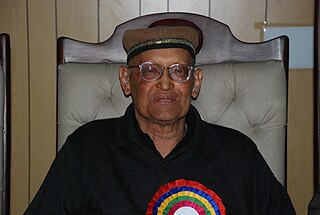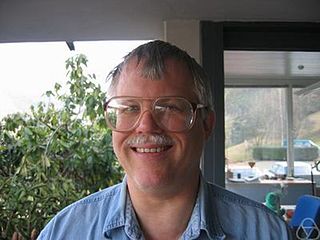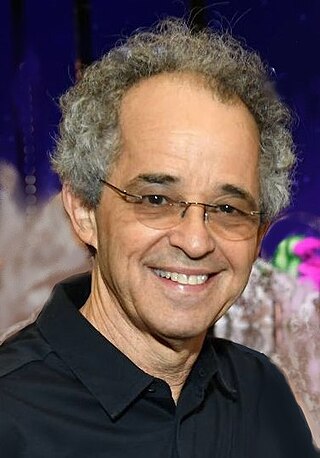This article needs additional citations for verification .(March 2023) |
Alexander Braverman (born June 8, 1974) is an Israeli mathematician.
This article needs additional citations for verification .(March 2023) |
Alexander Braverman (born June 8, 1974) is an Israeli mathematician.
Braverman was born in Moscow.[ citation needed ]. He earned in 1993 a BA degree in mathematics from the University of Tel Aviv, where in 1998 he received a Ph.D. (Kazhdan-Laumon Representations of Finite Chevalley Groups, Character Sheaves and Some Generalization of the Lefschetz-Verdier Trace Formula) under supervision of Joseph Bernstein. [1] From 1997 to 1999 he was a C.L.E. Moore instructor at Massachusetts Institute of Technology and in 2004 Benjamin Peirce Lecturer at Harvard University. He was an associate professor at Brown University from 2004 to 2009 and then a full professor from 2009 to 2015. He is a full professor at University of Toronto since 2015 and an associate faculty member at Perimeter Institute for Theoretical Physics. He was also a visiting scholar at Institute for Advanced Study (1997, 1999), the University of Paris VI and the Paris-Nord, the Hebrew University in Jerusalem, the Weizmann Institute, Clay Mathematics Institute and at the IHES in Paris.[ citation needed ]
Braverman specializes in the geometric Langlands program, the intersection of number theory, algebraic geometry and representation theory, which also has applications to mathematical physics.[ citation needed ]
In 2006 he was an invited speaker at the International Congress of Mathematicians in Madrid (Spaces of quasi-maps into the flag varieties and their applications).[ citation needed ]

Edward Witten is an American mathematical and theoretical physicist. He is a Professor Emeritus in the School of Natural Sciences at the Institute for Advanced Study in Princeton. Witten is a researcher in string theory, quantum gravity, supersymmetric quantum field theories, and other areas of mathematical physics. Witten's work has also significantly impacted pure mathematics. In 1990, he became the first physicist to be awarded a Fields Medal by the International Mathematical Union, for his mathematical insights in physics, such as his 1981 proof of the positive energy theorem in general relativity, and his interpretation of the Jones invariants of knots as Feynman integrals. He is considered the practical founder of M-theory.

Moscow Institute of Physics and Technology, is a public research university located in Moscow Oblast, Russia. It prepares specialists in theoretical and applied physics, applied mathematics and related disciplines.

Alberto Pedro Calderón was an Argentinian mathematician. His name is associated with the University of Buenos Aires, but first and foremost with the University of Chicago, where Calderón and his mentor, the analyst Antoni Zygmund, developed the theory of singular integral operators. This created the "Chicago School of (hard) Analysis".
David George Crighton, FRS was a British mathematician and physicist.

Mathai Varghese is a mathematician at the University of Adelaide. His first most influential contribution is the Mathai–Quillen formalism, which he formulated together with Daniel Quillen, and which has since found applications in index theory and topological quantum field theory. He was appointed a full professor in 2006. He was appointed Director of the Institute for Geometry and its Applications in 2009. In 2011, he was elected a Fellow of the Australian Academy of Science. In 2013, he was appointed the Elder Professor of Mathematics at the University of Adelaide, and was elected a Fellow of the Royal Society of South Australia. In 2017, he was awarded an ARC Australian Laureate Fellowship. In 2021, he was awarded the prestigious Hannan Medal and Lecture from the Australian Academy of Science, recognizing an outstanding career in Mathematics. In 2021, he was also awarded the prestigious George Szekeres Medal which is the Australian Mathematical Society’s most prestigious medal, recognising research achievement and an outstanding record of promoting and supporting the discipline.

Peter Clive Sarnak is a South African-born mathematician with dual South-African and American nationalities. Sarnak has been a member of the permanent faculty of the School of Mathematics at the Institute for Advanced Study since 2007. He is also Eugene Higgins Professor of Mathematics at Princeton University since 2002, succeeding Andrew Wiles, and is an editor of the Annals of Mathematics. He is known for his work in analytic number theory. He also sits on the Board of Adjudicators and the selection committee for the Mathematics award, given under the auspices of the Shaw Prize.

Toshiyuki Kobayashi is a Japanese mathematician known for his original work in the field of Lie theory, and in particular for the theory of discontinuous groups (lattice in Lie groups) and the application of geometric analysis to representation theory. He was a major developer in particular of the theory of discontinuous groups for non-Riemannian homogeneous spaces and the theory of discrete breaking symmetry in unitary representation theory.

Sourav Chatterjee is an Indian mathematician, specializing in mathematical statistics and probability theory. Chatterjee is credited with work on the study of fluctuations in random structures, concentration and super-concentration inequalities, Poisson and other non-normal limits, first-passage percolation, Stein's method and spin glasses. He has received a Sloan Fellowship in mathematics, Tweedie Award, Rollo Davidson Prize, Doeblin Prize, Loève Prize, and Infosys Prize in mathematical sciences. He was an invited speaker at the International Congress of Mathematicians in 2014.
Qaiser Mushtaq, , is a Pakistani mathematician and academic who has made numerous contributions in the field of Group theory and Semigroup. He has been vice-chancellor of The Islamia University Bahawalpur from December 2014 to December 2018. Mushtaq is one of the leading mathematicians and educationists in Pakistan. Through his research and writings, he has exercised a profound influence on mathematics in Pakistan. Mushtaq is an honorary full professor at the Mathematics Division of the Institute for Basic Research, Florida, US.

Asghar QadirHI, SI, FPAS, is a Pakistani mathematician and a prominent cosmologist, specialised in mathematical physics and physical cosmology. He has mentored several graduate students throughout his career and also served on important administrative positions, which include being the Chairman of the Mathematics Department at Quaid-i-Azam University, Islamabad, and later the Dean of Faculty of Natural Sciences at the same university. Professor Qadir formed the Center for Advanced Mathematics & Physics at the National University of Science and Technology, in 2004, served as its founding Director General until 2011 and as Professor Emeritus until 2019. He is considered one of the top mathematicians in Pakistan. He is currently working as a visiting professor at Abdus Salam School of Mathematical Sciences, Government College University, Lahore.
Morton E. Gurtin was a mechanical engineer who became a mathematician and mathematical physicist. He was an emeritus professor of mathematical sciences at Carnegie-Mellon University, where for many years he held an endowed chair as the Alumni Professor of Mathematical Science. His main work is in materials science, in the form of the mathematical, rational mechanics of non-linear continuum mechanics and thermodynamics, in the style of Clifford Truesdell and Walter Noll, a field also known under the combined name of continuum thermomechanics. He has published over 250 papers, many among them in Archive for Rational Mechanics and Analysis, as well as a number of books.
Philip Candelas, is a British physicist and mathematician. After 20 years at the University of Texas at Austin, he served as Rouse Ball Professor of Mathematics at the University of Oxford until 2020 and is a Fellow of Wadham College, Oxford.

Charles Alexander Weibel is an American mathematician working on algebraic K-theory, algebraic geometry and homological algebra.

Eric Mark Friedlander is an American mathematician who is working in algebraic topology, algebraic geometry, algebraic K-theory and representation theory.

Gérard Ben Arous is a French mathematician, specializing in stochastic analysis and its applications to mathematical physics. He served as the director of the Courant Institute of Mathematical Sciences at New York University from 2011 to 2016.

Leo Corry is an Israeli historian of mathematics.

Tristan Rivière is a French mathematician, working on partial differential equations and the calculus of variations.
Elena Yanovna Braverman is a Russian, Israeli, and Canadian mathematician known for her research in delay differential equations, difference equations, and population dynamics. She is a professor of mathematics and applied mathematics at the University of Calgary, and one of the editors-in-chief of the journal Advances in Difference Equations.
Boaz Barak is an Israeli-American professor of computer science at Harvard University.
Yongbin Ruan is a Chinese mathematician, specializing in algebraic geometry, differential geometry, and symplectic geometry with applications to string theory.